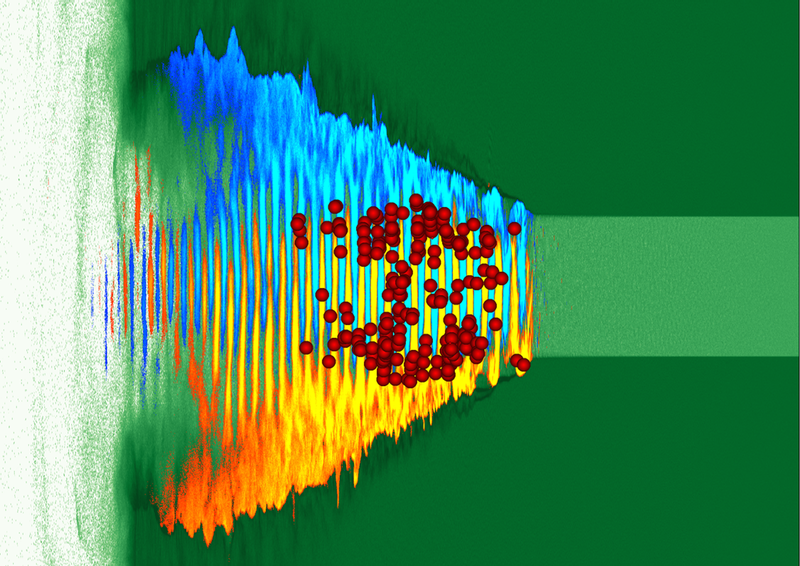May 12, 2016 weblog
Computer simulations show it might be possible to create gamma ray beams using laser and plastic targets

(Phys.org)—A trio of researchers with The University of Texas has found a possible way to create gamma ray beams by firing a laser beam at a piece of plastic. In their paper published in Physical Review Letters, David Stark, Toma Toncian and Alexey Arefiev describe the computer simulation they created, what they found and their hopes that their discovery will lead to a means for creating intense beams of gamma rays for use in a wide variety of applications.
Scientists would like to be able to create intense on-demand gamma ray beams for use in many types of applications, both academic and in products—from nuclear fusion research to medical use to the study of fundamental physics—but to date, efforts to create such a beam have left much to be desired. Such efforts have generally involved combining electron and laser beams, but to make a truly useful gamma beam would require a stronger laser beam than currently exists. In this new effort, the researchers have taken a different approach, firing a laser beam at a piece of plastic, resulting in the creation of plasma consisting of ions and electrons. In their simulation, the laser would then shove the plasma forward, which would result in the creation of a strong magnetic field, which would in turn speed up the electrons even more—but not in straight lines. The movement of the electrons would generate synchrotron radiation of gamma ray photons moving back towards the direction of the laser.
The team reports that their approach works in principle, though it might need some tweaking in a real world experiment. They found that as the laser pulse made its way into the plastic, the plastic became unstable, resulting in an unstable beam of gamma rays photons. To fix that problem, they tried varying the size and shape of the plastic and found that forming it into a round channel would cause the laser pulse to stay on course, resulting in the desired clean beam.
The researchers cannot say for sure if what they have simulated would work as envisioned in the real world, but are hoping a team of experimentalists, (applied physicists) will take up the challenge. If successful such beam creation would be quite intense—providing a new tool for both practical applications and physics research projects.
More information: D. J. Stark et al. Enhanced Multi-MeV Photon Emission by a Laser-Driven Electron Beam in a Self-Generated Magnetic Field, Physical Review Letters (2016). DOI: 10.1103/PhysRevLett.116.185003
Abstract
We use numerical simulations to demonstrate that a source of collimated multi-MeV photons with high conversion efficiency can be achieved using an all-optical single beam setup at an intensity of 5×1022 W/cm2 that is already within reach of existing laser facilities. In the studied setup, an unprecedented quasistatic magnetic field (0.4 MT) is driven in a significantly overdense plasma, coupling three key aspects of laser-plasma interactions at high intensities: relativistic transparency, direct laser acceleration, and synchrotron photon emission. The quasistatic magnetic field enhances the photon emission process, which has a profound impact on electron dynamics via radiation reaction and yields tens of TW of directed MeV photons for a PW-class laser.
Journal information: Physical Review Letters
© 2016 Phys.org




















